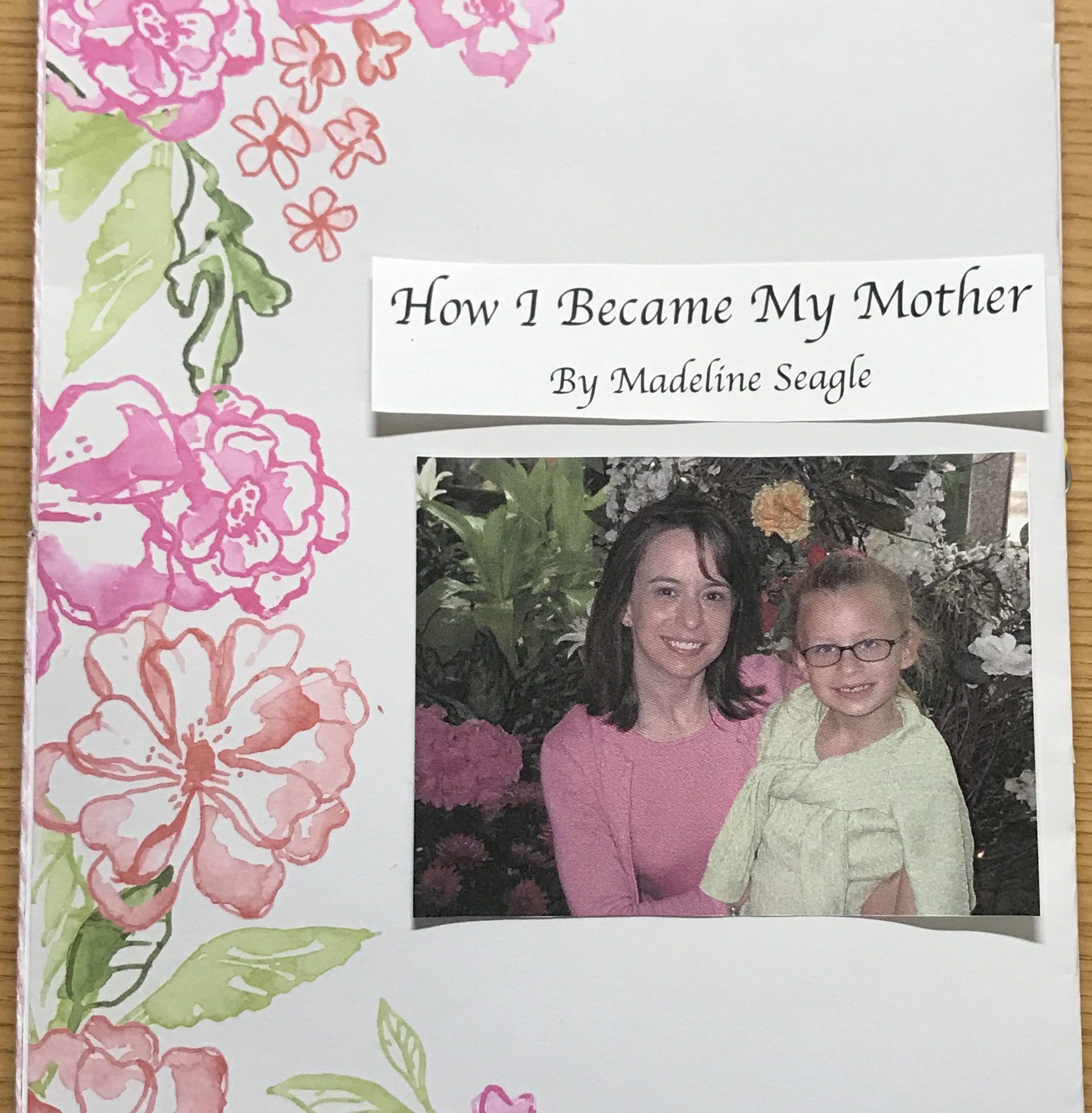Iterative Approximation in Creation of How I Became My Mother
My project for this book was inspired by my mom’s scrapbooking that I have grown up watching. She is able to tell a beautiful story of her college years, a trip, my childhood, or anything really using visually appealing backgrounds and images with perfectly explanatory captions. I aimed to use my mother’s scrapbooking techniques to create a story about my relationship with my mother. Melissa Sweet, when describing E.B. White’s writing process writes,
“And he kept struggling with the first line. He began: Charlotte was a grey spider who lived in the doorway of a barn. Then he tried: I shall speak first of Wilbur… After setting aside the story for a year, he tried: At midnight, John Arable pulled his boots on, lit a lantern, and walked to the hoghouse. Last, White cut to the action and tried: ‘Where’s Papa going with that hand ax?,” then shortening it to: ‘Where’s Papa going with that ax?’”
This process E.B. White uses of trial and error is similar to my process for making my book. As E.B. White played with the structure of his opening sentence, I played with the structure, texts, and images and the interactions between them for my book. In reflection, I have realized that this process was one of iterative approximation- constantly evaluating to correct for errors and improvements and making new drafts based upon those evaluations.
First, I would like to note that one limitation I faced throughout this project was a limited amount of resources. I knew I wanted to use my mom’s scrapbooking paper for the book, but I did not have enough to make multiple prototypes with the paper. I wanted my process to be one of making and remaking books, correcting for errors made in previous prototypes. Therefore, my first two prototypes were not used with the final scrapbooking paper.
In my first prototype, my book had far too many pages than what I needed (and over the maximum limit for the project). My prototype also lacked a cut out and use of an exclamation mark. Here is what the first prototype looked like, not including the extra blank pages in the book:
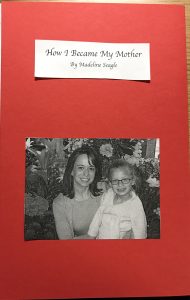
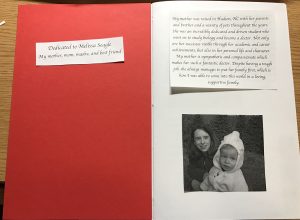
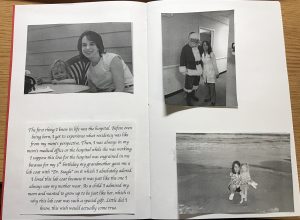
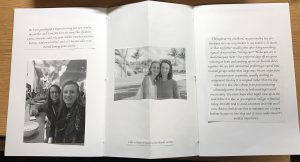

As you can see, this prototype was pretty bland, with white pages and was lacking basic requirements for the assignment.
I took my mistakes from the first prototype (the missing requirements and extra pages) and fixed them in my second prototype. Rather than editing the original prototype by unbinding it and taking out the extra pages, etc. I decided I wanted to start by scratch to better learn from the process. In this second prototype I used the correct number of pages and built in my cut out (with a spider). I still did not include an exclamation mark, and did not use the floral paper and colored images. As Dr. Churchill mentioned to me, I also did not use my accordion fold in the most effective way possible. As you can see, the second prototype looks very similar to the first, with just the addition of the cut out:

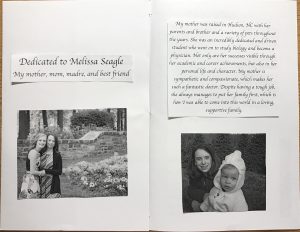
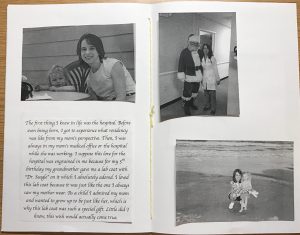
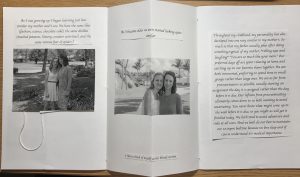

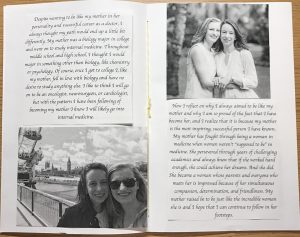

In the second prototype I still did not include my scrapbooking paper and colored images, so I made that my primary goal for the third prototype.
Starting from scratch again, I made the structure of my book for the third prototype. I used the correct number of pages and made better use of my accordion fold, to give more meaning to the images and in the fold. For example, the recent picture of me and my mom folds over to cover the younger picture and then the accordion can be expanded to show our aging.
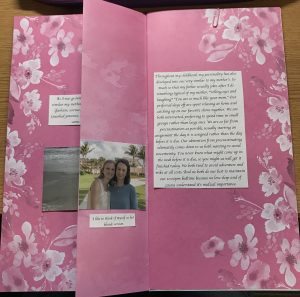
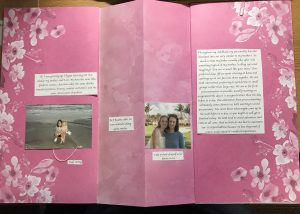
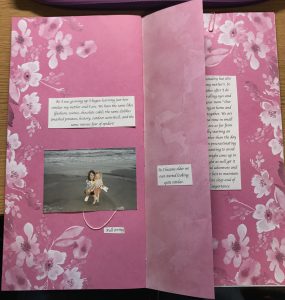
In this final prototype, I was able to see what the final version would look like and I learned by using the new paper that the larger paper is not very full, so I included more images into the third prototype. This is what my third prototype looked like:
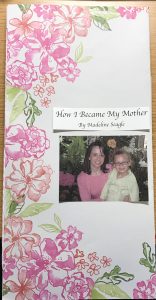
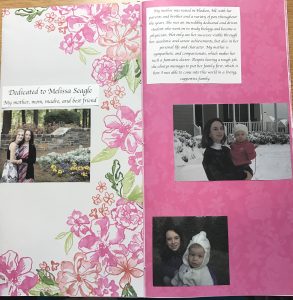
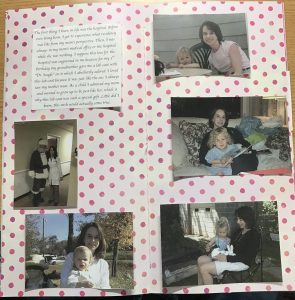



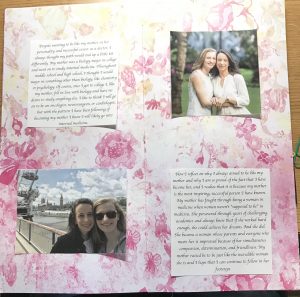
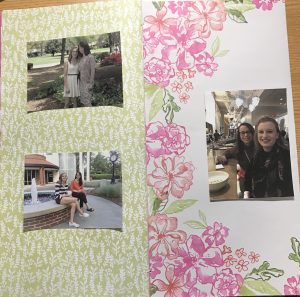
Because I did not have enough paper to remake the book with the scrapbooking paper, my third prototype had the images paper-clipped into the book, rather than taped, so that I could still make changes.
My final book had minimal changes from the third prototype. I made my spider cut out better and taped in all of the images and text for this final book. The final book looks the exact same as the third prototype, except for the spider:
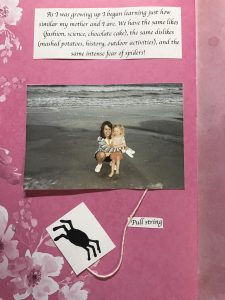
My final prototype has the strength of being very visually appealing and meeting my goal of using my mother’s scrapbooking as inspiration and theme for the book. However, the book is limited in the pictures that I had access to (I could have found better-fitting pictures) and the quality of printing available. My final book was also limited by page and word constraints because the true story of my relationship with my mom could be a novel.
In this process of making How I Became My Mother I learned through the same writing style of E.B. White. I made a prototype, assessed the model for any mistakes and improvements that could be made, and then used that assessment for the next prototype in a process I like to call iterative approximation.
Works Cited:
Sweet, Melissa. Some Writer!: The Story of E.b. White. Houghton Mifflin Harcourt, 2016. Print.
